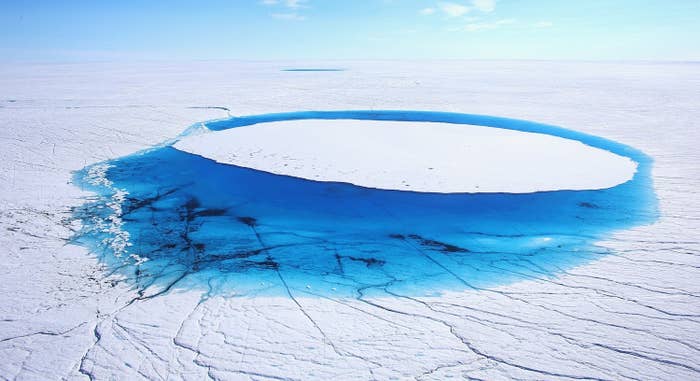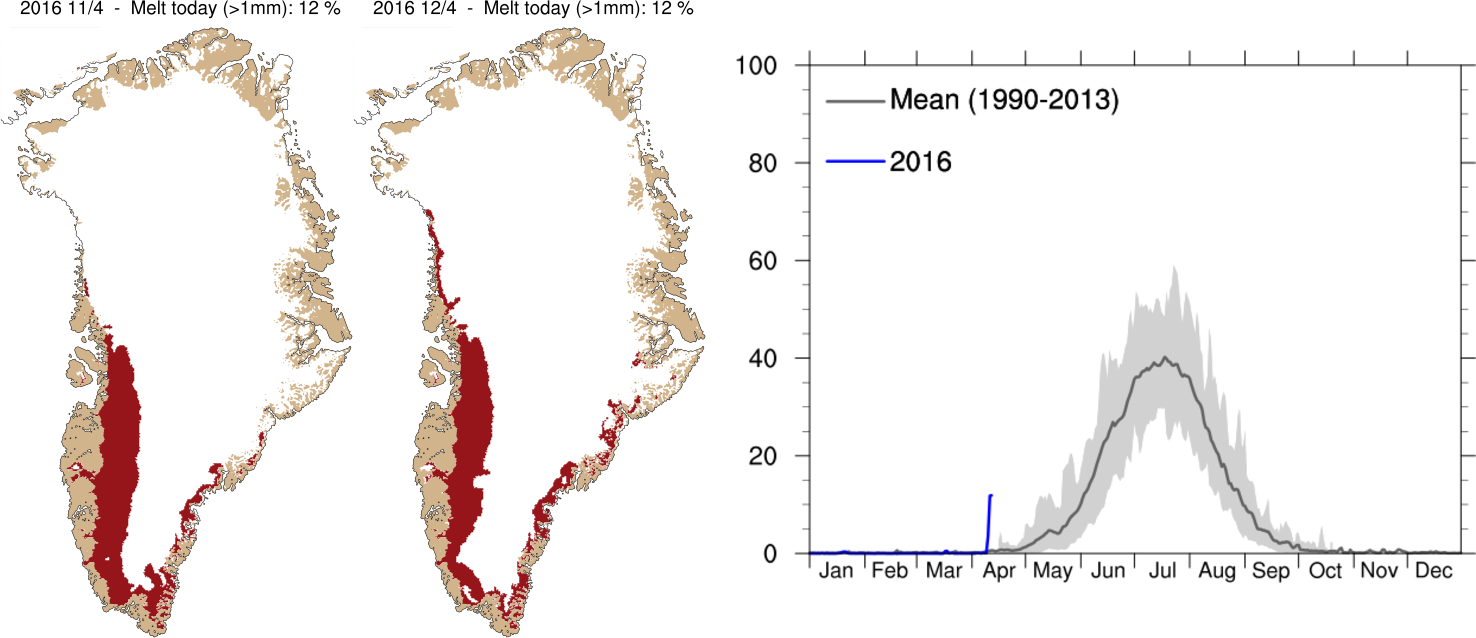
Greenland's giant ice sheet melted at a record rate this week after a weather system brought unusually warm temperatures to the Arctic island, raising concerns of an even larger melt this summer.
Warm, of course, is relative. But much of the nation reached above freezing temperatures on Monday, with some areas even seeing highs above 10 degrees Celsius, or 50 degrees Fahrenheit.
Even some of the highest-elevation weather stations on the ice sheet saw above average temperatures.
“At KAN_U for example, a site at 1840 m above sea level, we observed a maximum temperature of 3.1°C," scientist Robert Fausto told the Danish Meteorological Institute's Polar Portal. "This would be a warm day in July, never mind April."
Glacier meltwater turns into raging river in Kangerlussuaq Greenland, where we gathered to prep for #Petermann2015
The warm weather caused about 12% of the ice sheet to melt, based on scientific models. That amount of melt typically doesn't happen until later in the year, and the previous records for early melt all took place in May.

"We had to check that our models were still working properly," Danish climate scientist Peter Langen said.
Forecasters expect temperatures to drop again, though it's possible another frontal system could bring warm temperatures back to southern Greenland on Thursday.
Even if the temperatures return to freezing, the early melt could have consequences. As melted snow refreezes, it releases heat, scientists explained. That can reduce the amount of warmth necessary to start melting all over again.
"It is a very unusual situation, especially so early in the year," Danish climate scientist Martin Stendel said.
